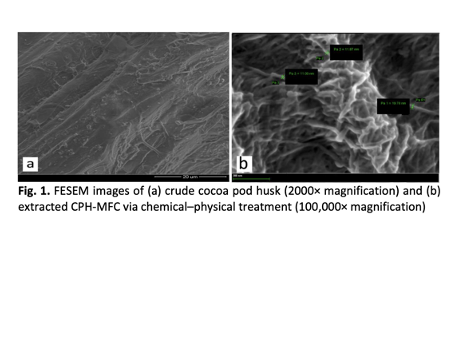Physicochemical Characteristics of Bionanocomposites, Polycaprolactone/Starch/Cocoa Pod Husk Microfibrillated Cellulose
Keywords:
Bionanocomposites , thermal properties , water uptake rateAbstract
The development of biocomposites has increased due to their biodegradability, renewability, and high specific strength which are comparable with other polymer composites. Even though, the conventional composites are still in high demand due to their durability, however, it cannotdecompose and the accumulation of these wastes for a long period is harmful to the living things and to the environment. Therefore, in this study the biodegradable polymers, polycaprolactone (PCL) and starch were selected in this study to synthesize bionanocomposite incorporated with microfibrillated cellulose (MFC). The microfibrillated cellulose (MFC) was extracted from cocoa pod husk (CPH–MFC) and was mixed with PCL and starch, where its amount was varied between 3-10wt%. The prepared bionanocomposites were characterised in terms of its water uptake rate, and structural and thermal properties using Fourier transform infared spectroscopy (FTIR)and differential scanning calorimetry (DSC). The morphology analysis using scanning electron microscope (SEM) shows that the CPH–MFC extracted was in nanoscale size. The percentage of water uptake of the prepared bionanocomposites increased withthe amount of CPH–MFC. Meanwhile, the FTIR spectra of the prepared bionanocomposites showed almost similar characteristic peaks with the FTIR spectra of pure PCL. DSC analysis showed that the melting temperature increased as the amount of CPH–MFC increased. This study justifies that the incorporation of CPH–MFC with the PCL–starch matrix improved the water uptake rate and thermal properties but did not show significant changes to the structure of PCL.
Downloads




























